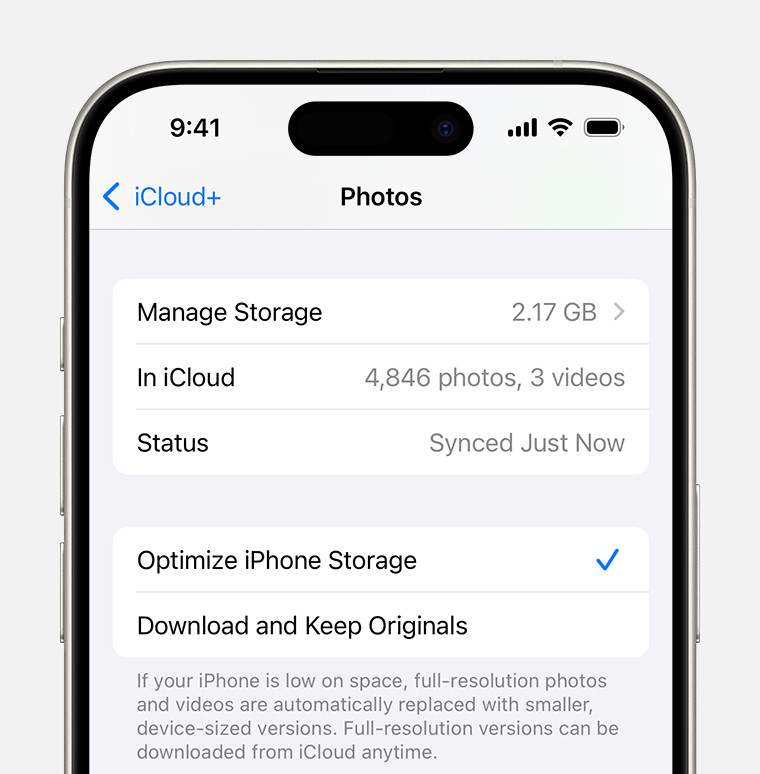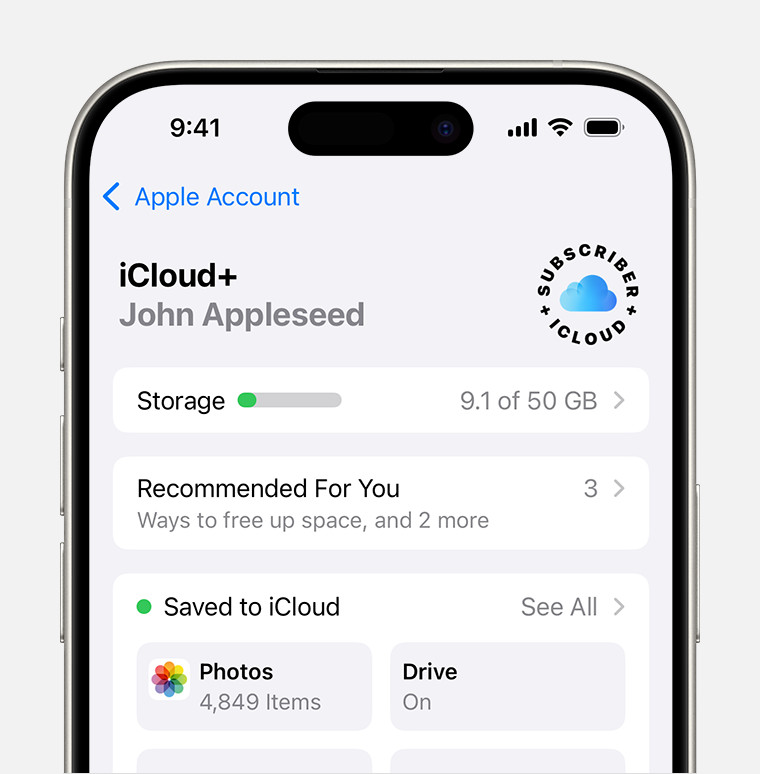Storing countless memories on your iPhone can quickly fill up its storage. Knowing how to manage and store your photos efficiently is crucial. This guide provides practical steps on how to store photos from your iPhone using iCloud Photos and other effective methods to free up valuable space on your device.
 iCloud Photos section of iCloud settings showing status and photo storage options
iCloud Photos section of iCloud settings showing status and photo storage options
Checking Your iPhone’s Storage Capacity
Before diving into photo storage solutions, it’s helpful to understand how much space you have available.
Checking Device Storage
- Navigate to Settings.
- Tap General.
- Select [Your Device] Storage.
Here, you’ll see a breakdown of your used and available storage, along with recommendations for optimizing space. You’ll also see a list of apps and their storage consumption.
 iPhone storage section of Settings displaying a recommendation to Offload Unused Apps
iPhone storage section of Settings displaying a recommendation to Offload Unused Apps
Checking iCloud Storage
- Go to Settings.
- Tap your Apple ID/Name.
- Select iCloud.
- Tap Manage Account Storage.
This shows your total iCloud storage, how much is used, and which apps are using it. Consider upgrading your iCloud storage plan if needed.
 iCloud storage section of Settings showing recommendations and app options
iCloud storage section of Settings showing recommendations and app options
Leveraging iCloud Photos for Photo Storage
iCloud Photos is a seamless way to store photos from your iPhone and access them across your devices. By default, photos are stored in full resolution on your device. Using iCloud Photos, you can optimize this.
Enabling and Optimizing iCloud Photos
- Go to Settings > [Your Name] > iCloud > Photos.
- Toggle on Sync this iPhone (or iCloud Photos in earlier iOS versions).
- Select Optimize iPhone Storage.
With Optimize iPhone Storage, full-resolution photos and videos are stored in iCloud, while space-saving versions reside on your iPhone. As long as you have sufficient iCloud storage, you can store an unlimited number of photos and videos.
Exploring Other Photo Storage Options
If iCloud isn’t your preferred solution, consider these alternatives:
- Computer Backup: Regularly transfer photos to your computer via USB or cloud services like Dropbox or Google Drive.
- External Hard Drives: Invest in an external hard drive specifically for photo storage and back up your iPhone photos to it.
- Cloud Storage Services: Services like Google Photos, Dropbox, and OneDrive offer alternative cloud storage options for your photos.
Conclusion
Managing your iPhone’s photo storage is essential for maintaining optimal device performance. Utilizing iCloud Photos with the “Optimize iPhone Storage” setting is a highly effective method for saving space without losing access to your entire photo library. Explore alternative options like computer backups, external hard drives, or other cloud storage services to find the best fit for your needs. Regularly managing your photos ensures you have ample space for new memories while keeping your older ones safe and accessible.
